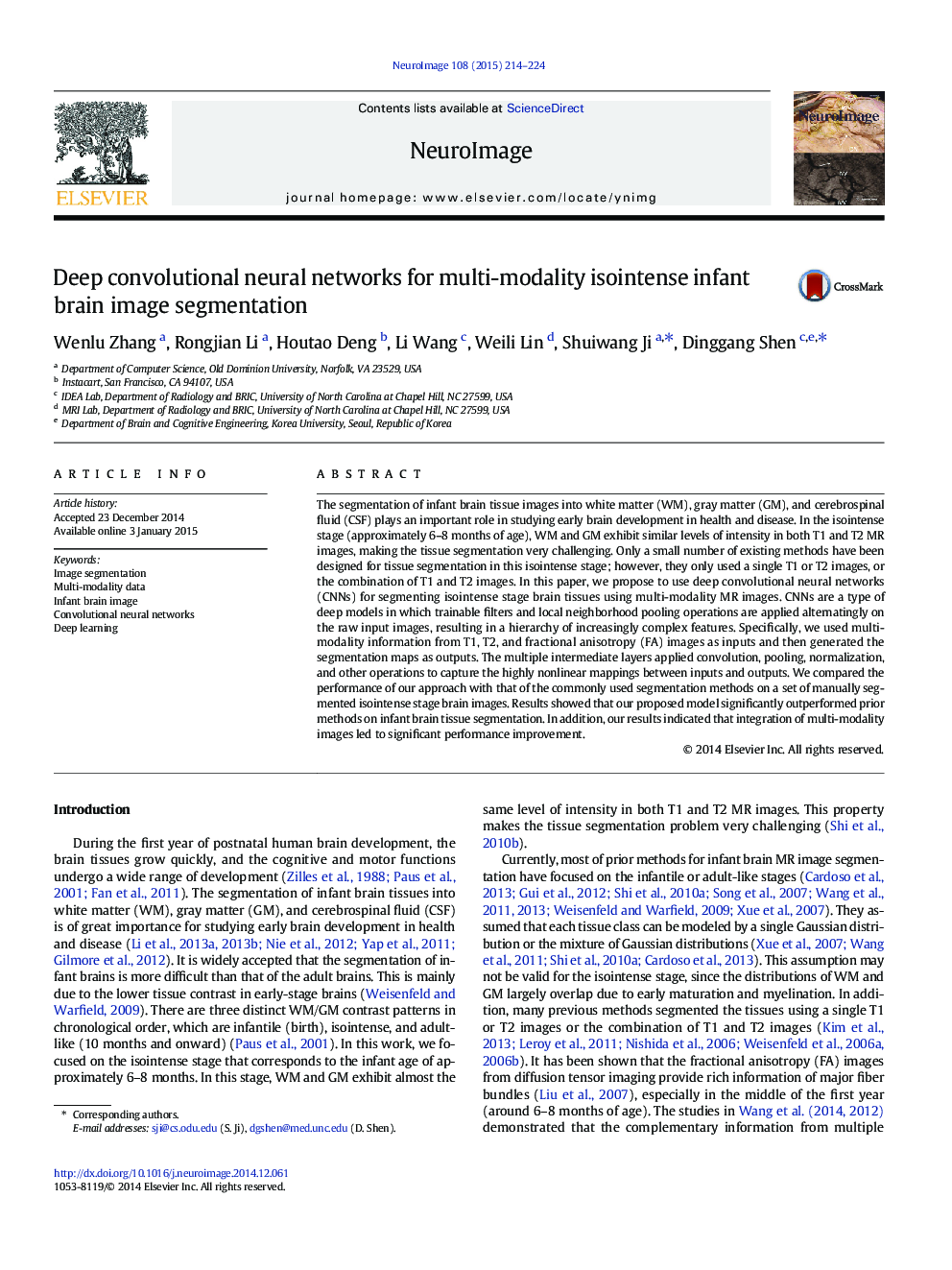| کد مقاله | کد نشریه | سال انتشار | مقاله انگلیسی | نسخه تمام متن |
|---|---|---|---|---|
| 6025882 | 1580899 | 2015 | 11 صفحه PDF | دانلود رایگان |
- We study the segmentation of isointense infant brain images.
- We integrate multi-modality images.
- We employ deep convolutional neural networks.
- Integration of multi-modality images improves performance.
- Deep convolutional neural networks outperform other methods.
The segmentation of infant brain tissue images into white matter (WM), gray matter (GM), and cerebrospinal fluid (CSF) plays an important role in studying early brain development in health and disease. In the isointense stage (approximately 6-8 months of age), WM and GM exhibit similar levels of intensity in both T1 and T2 MR images, making the tissue segmentation very challenging. Only a small number of existing methods have been designed for tissue segmentation in this isointense stage; however, they only used a single T1 or T2 images, or the combination of T1 and T2 images. In this paper, we propose to use deep convolutional neural networks (CNNs) for segmenting isointense stage brain tissues using multi-modality MR images. CNNs are a type of deep models in which trainable filters and local neighborhood pooling operations are applied alternatingly on the raw input images, resulting in a hierarchy of increasingly complex features. Specifically, we used multi-modality information from T1, T2, and fractional anisotropy (FA) images as inputs and then generated the segmentation maps as outputs. The multiple intermediate layers applied convolution, pooling, normalization, and other operations to capture the highly nonlinear mappings between inputs and outputs. We compared the performance of our approach with that of the commonly used segmentation methods on a set of manually segmented isointense stage brain images. Results showed that our proposed model significantly outperformed prior methods on infant brain tissue segmentation. In addition, our results indicated that integration of multi-modality images led to significant performance improvement.
Journal: NeuroImage - Volume 108, March 2015, Pages 214-224
